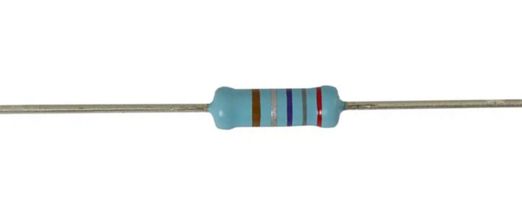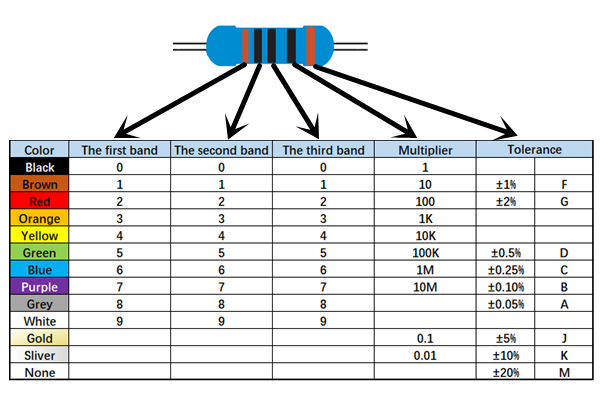Resistors with color bands are an essential tool for quickly determining their resistance value without the need for a multimeter. This method is widely used in cylindrical resistors such as carbon film, metal film, metal oxide film, fuse, and wire-wound resistors. These components typically have either four, five, or six color bands that represent different aspects of their resistance value.

Color-coded resistors are among the most commonly used components in electronic circuits. They use colored bands to indicate their resistance values, making them easy to identify and distinguish. The basic units for resistance include ohms (Ω), kilo-ohms (KΩ), and mega-ohms (MΩ). To give you a better understanding, 1 MΩ equals 1000 KΩ or 1,000,000 Ω.
Most color-coded resistors come in either four-band or five-band configurations, with the four-band version being more common. In a four-band resistor, the first two bands represent significant digits, the third band is the multiplier, and the fourth band indicates the tolerance. For a five-band resistor, the first three bands are the significant digits, the fourth is the multiplier, and the fifth is the tolerance. Tolerance is usually shown by gold (5%), silver (10%), or brown (1%). If no band is present, it means a 20% tolerance, and occasionally green may be used for 0.5%.

How to Identify Four-Band Resistors
A four-band resistor has four colored bands that indicate its resistance value. Starting from the left, the first band is the first digit, the second is the second digit, the third is the multiplier, and the fourth is the tolerance. When it's difficult to determine which band is first, look at the fourth band — it's often gold or silver. This technique only works for four-band resistors and not for five-band ones.
Examples:
- Red, Yellow, Brown, Gold: 24 × 10 = 240 Ω, 5% tolerance
- Green, Red, Yellow, Silver: 52 × 10,000 = 520 KΩ, 10% tolerance
How to Identify Five-Band Resistors
Five-band resistors follow a similar logic but have one additional digit. From left to right, the first three bands are the significant digits, the fourth is the multiplier, and the fifth is the tolerance. This design allows for more precise resistance values.
Example: Red, Red, Black, Black, Brown: 220 × 1 = 220 Ω, 1% tolerance.
Understanding Six-Band Resistors
Some resistors have six color bands. The first five bands work the same way as in a five-band resistor, while the sixth band represents the temperature coefficient. These resistors are less common and are typically used in specialized applications where high precision and stability are required.
Brass Tube,Brass Square Tube,Thin Wall Brass Tubing,Brass Round Tube
TIANJIN JIAYI STEEL CO.LTD , https://www.jiayisteel.com